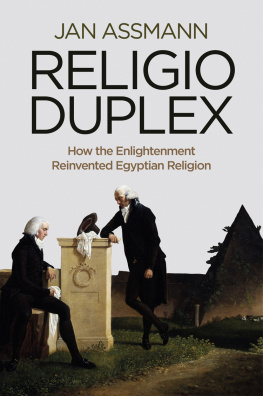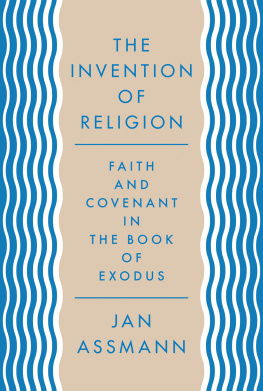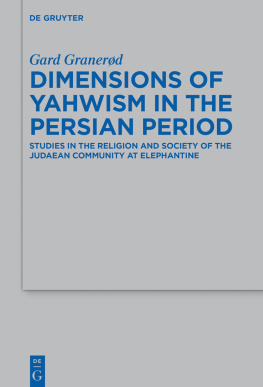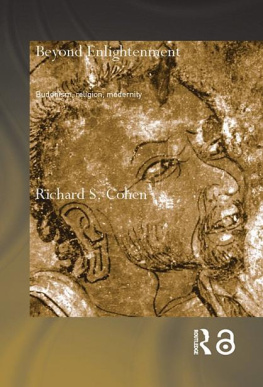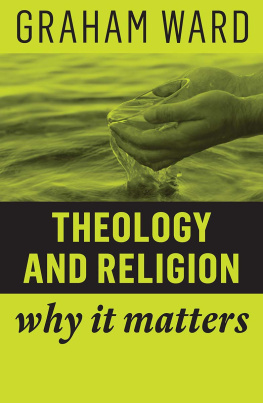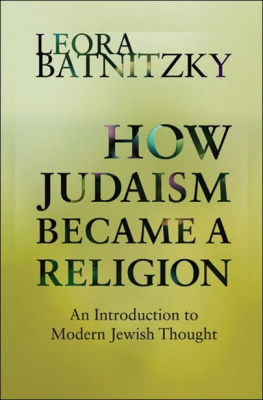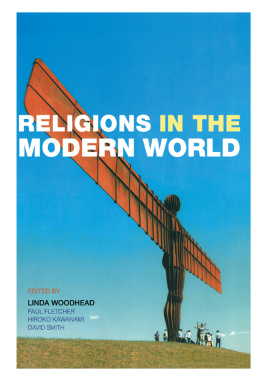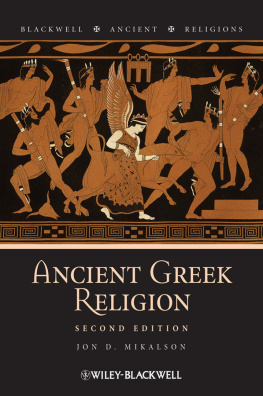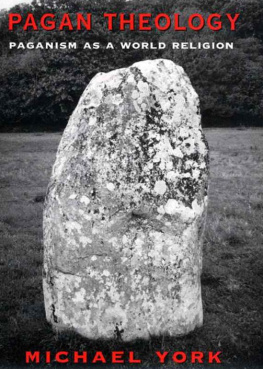
Table of Contents
Amicis caris
Martin Mulsow, Sarah and Guy Stroumsa
First published in German as Religio Duplex Verlag der Weltreligionen im Insel Verlag Berlin 2011. All rights reserved by and controlled through Insel Verlag Berlin.
This English edition Polity Press, 2014
The translation of this work was funded by Geisteswissenschaften International Translation Funding for Humanities and Social Sciences from Germany, a joint initiative of the Fritz Thyssen Foundation, the German Federal Foreign Office, the collecting society VG WORT and the Brsenverein des Deutschen Buchhandels (German Publishers & Booksellers Association).
Polity Press
65 Bridge Street
Cambridge CB2 1UR, UK
Polity Press
350 Main Street
Malden, MA 02148, USA
All rights reserved. Except for the quotation of short passages for the purpose of criticism and review, no part of this publication may be reproduced, stored in a retrieval system, or transmitted, in any form or by any means, electronic, mechanical, photocopying, recording or otherwise, without the prior permission of the publisher.
ISBN-13: 978-0-7456-6842-0
ISBN-13: 978-0-7456-6843-7(pb)
ISBN-13: 978-0-7456-8149-8(epub)
ISBN-13: 978-0-7456-8148-1(mobi)
A catalogue record for this book is available from the British Library.
The publisher has used its best endeavours to ensure that the URLs for external websites referred to in this book are correct and active at the time of going to press. However, the publisher has no responsibility for the websites and can make no guarantee that a site will remain live or that the content is or will remain appropriate.
Every effort has been made to trace all copyright holders, but if any have been inadvertently overlooked the publisher will be pleased to include any necessary credits in any subsequent reprint or edition.
For further information on Polity, visit our website: www.politybooks.com
Foreword
This study investigates the differences between public and arcane doctrine, freely available and restricted ideas about the divine, profane and initiated forms of social life, the God of the Fathers and the philosophers god. My interest in these matters has two roots. Both reach a long way back in my intellectual biography, and they also have something to do with my own double life as Egyptologist and cultural scientist. The first goes back to the project on the topic of secrecy that Aleida Assmann and I (in my role of cultural scientist) investigated in a series of conferences organized some fifteen to twenty years ago by the research group, Archaeology of Literary Communication; the proceedings were subsequently published in three volumes (Veil and Threshold, vol. 1: Secrecy and the Public Sphere, 1997; vol. 2: Secrecy and Revelation, 1998; vol. 3: Secrecy and Curiosity, 1999). The second, Egyptological aspect derives from the friendly debate, carried out in the 1980s between Erik Hornung and myself, about the problem of an ancient Egyptian monotheism, a debate in which the question of an esoteric tradition of mono- or pantheistic ideas in the context of ancient Egyptian polytheism also played a role (Monotheism and Cosmotheism: Ancient Egyptian Forms of Thinking the One and their European Reception History, 1993). This interest was sustained throughout my research on the reception of Egypt in the seventeenth and eighteenth centuries, documented in Moses the Egyptian (1997/98) and The Magic Flute (2005). Above all, it was my preoccupation with Mozart's opera and an important aspect of its cultural-historical environment, Viennese freemasonry, which first opened my eyes to the immense importance assigned to Egypt in late eighteenth-century masonic circles as the (supposed) prototype of a culture split between public sphere and mystery cult, exoteric and esoteric religion. I coined the term religio duplex to indicate this entire complex of ideas, interpreting The Magic Flute as an opera duplex. In my book on Mozart's opera, I lacked the space to retrace in any detail the history of this idea from antiquity through to Mozart's lodge and masonic investigations into Egyptian and other mysteries. This study will endeavour to make good that omission.
My work on the study began in early 2004 at the International Research Centre for Culture Sciences (IFK) in Vienna. At the Austrian Grand Lodge, I am deeply indebted to Dr Rdiger Wolf for placing rare archival materials at my disposal. The study was completed in early 2010 during a two-week stay at the research library in Friedenstein Castle. The library's director, Prof. Martin Mulsow, kindly placed at my disposal the arcana of his private library as well as the riches of the Gotha collection, drawing my attention to many passages and byways in the labyrinth of baroque erudition that would otherwise have escaped my notice. That is why I dedicate this book to him, alongside my friends in Jerusalem, Sarah and Guy Stroumsa, with whom I proposed some years ago (and subsequently researched) the thesis that the history of religion was discovered in the seventeenth century (ARG 3 [2001]). In April 2010 I was invited to present the most important findings of this study during a short guest professorship at Graz University, and to discuss them with colleagues and students there; for that opportunity, I am deeply grateful to Prof. Irmtraud Fischer. I also extend my heartfelt thanks to Hans-Joachim Simm and Claus-Jrgen Thornton for originally accepting this study for publication in the Verlag der Weltreligionen, and especially to Claus-Jrgen for the extraordinary care he took in editing the manuscript. I owe many references and comments in this book to his scrutiny, and it is only at his express wish that they have not been individually acknowledged.
Abbreviations
The following abbreviations have been used in the endnotes:
| ARG | Archiv fr Religionsgeschichte |
| JEA | Journal of Egyptian Archaeology |
| JF | Journal fr Freymaurer |
| KV | Kchelverzeichnis |
| RAC | Reallexikon fr Antike und Christentum |
Introduction
Should we not say that Spinoza took his [doctrine] from these Egyptians?
P. E. Jablonski
To introduce the theme of dual religion, I want to bring two scenes to mind. The first took place in the year 1654. On 11 November of that year, the thirty-one-year-old Blaise Pascal, a mathematician of genius and seeker after God who was suffering from deep depression at the time, and probably tuberculosis as well, had a religious experience that fundamentally changed his life. Wanting to hold fast to this experience under all circumstances, to preserve it from the vicissitudes of memory and fortune, he noted the essentials on a piece of parchment, which he then sewed into his coat so that it would always lie close to his heart. The note was discovered after his death by his manservant. It reads:
In the year of Grace, 1654,
On Monday, 23rd of November, Feast of St. Clement, Pope and Martyr, and of others in the Martyrology,
Vigil of St. Chrysogonis, Martyr, and others,
From around half past ten in the evening until about half past twelve.
FIRE
God of Abraham, God of Isaac, God of Jacob, not of the philosophers and scholars.
Certitude. Certitude. Feeling. Joy. Peace.
God of Jesus Christ
Next page
